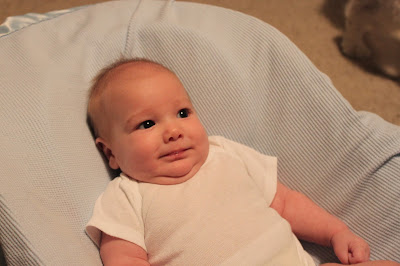- Vocalization
- Birth – 4 month
Ø Crying/ Makes pleasure sounds
Ø Reflective crying – for different needs, e.g.
food, hit
Ø Cooing - repeats the same sound a lot,
e.g. u-u-u, o-o-o, i-i-i
Ø Gargling – a-ggg
2007
- Bubbling – 5-12 month. Sounds are produced with front parts of mouth; repeating the same sounds, pattern
Ø Repetitive (5-8 month) babbling sounds
more speech-like with many different sounds, including p, b, and m, e.g. ba-ba-ba-ba, ma-ma-ma-m. Tells you (by sound
or gesture) when he wants you to do something
Ø Canonical (12 month) – different consonants,
e.g. bata-bata-bata. Babbling has
both long and short groups of sounds such as “tata upup bibibibi.”
Ø Uses speech or non-crying sounds to get and keep
attention
2008
- Meaningful
words – 1-2 years Says more words every month
Ø Has 1 or 2 words, e.g. uh-oh, bye-bye, dada, mama, no, although they may not be clear
Ø Labeling common objects, e.g. book, car, ball
Ø Puts two-words together, e.g. daddy gone, baby sleep, more cookie, no
juice, mommy book
Ø Uses some 1-2 word questions, e.g. Where kitty? Go bye-bye. What’s that?
2009
- Phrases/
Simple sentences - 2-3 years
Ø Has a word for almost everything
Ø Uses 2-3-word “sentences” to talk about and ask
for things. Speech is understood by familiar listeners most of the time
Zosia and Basia P, 2010
- Simple talk
- 3-4 years
Ø Talks about activities at school or at friends’
homes. People outside family usually understand child’s speech
Ø Uses a lot of sentences that have 4 or more
words
- Story
taller - 4-5 years
Ø Uses sentences that give lots of details, e.g, I like to read my books.
Ø Tells stories that stick to topic
Ø Communicates easily with other children and
adults
Ø Says most sounds correctly except a few, like l, s, r, v, z, j, ch, sh, th






No comments:
Post a Comment